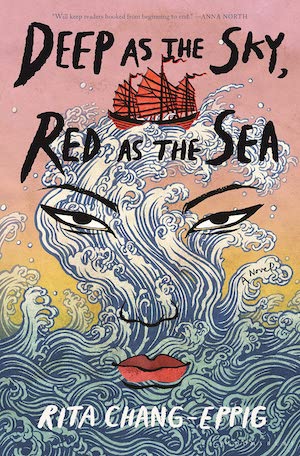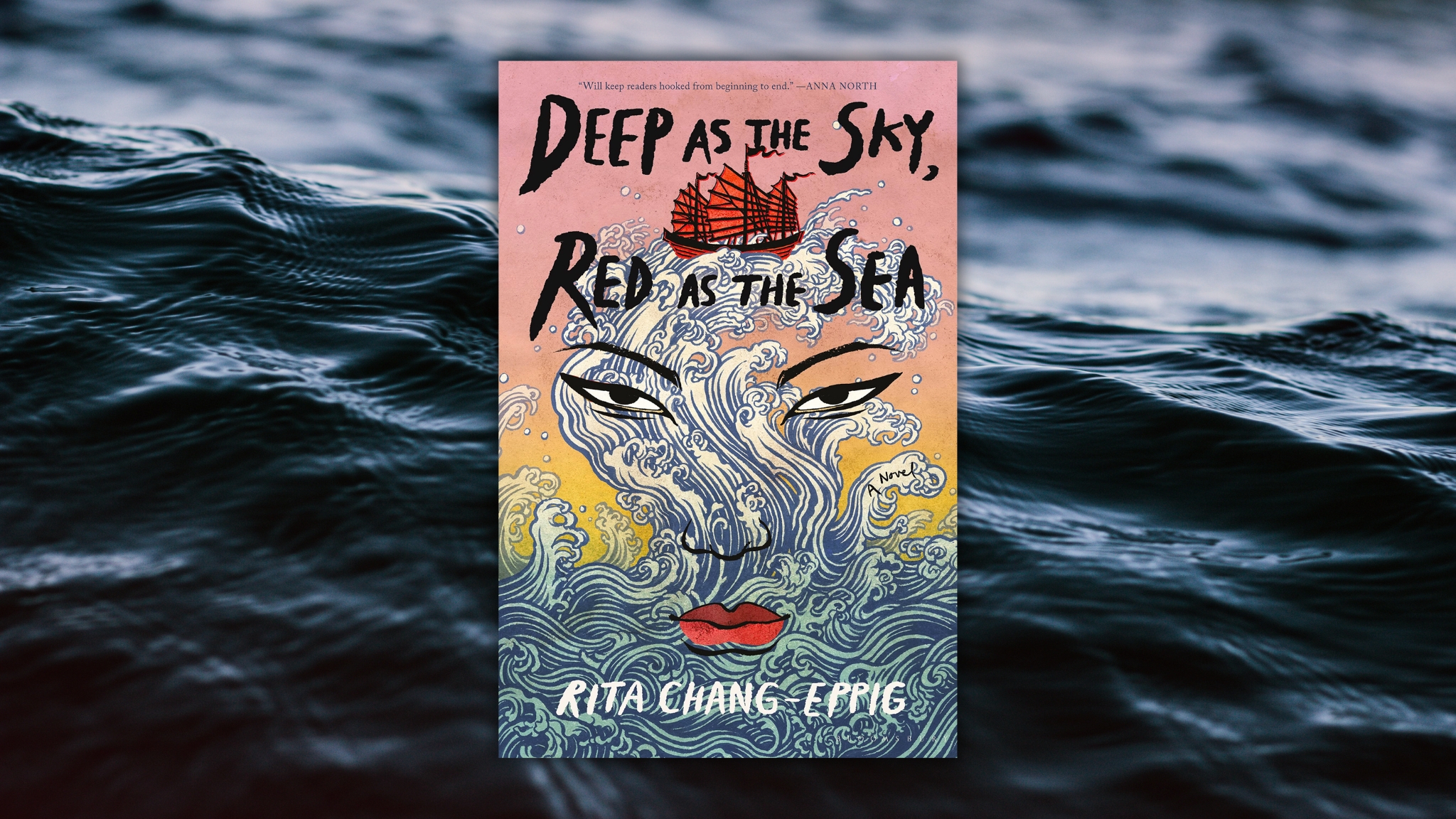Deep As the Sky, Red As the Sea by Rita Chang-Eppig
Rita Chang-Eppig‘s debut historical novel is a lyrical tale of a legendary pirate queen and her struggle to maintain power in the South China Seas. Brimming with poetic language and vivid depictions of life in all its facets, Deep as the Sky, Red as the Sea (Bloomsbury Publishing) is a full-blooded, moving account of a woman’s conflict with her past, present and future as she fights to keep one of the only things that she has left — her fleet.
Shek Yeung, based on an actual 19th-century Chinese pirate queen who ruled in the South China Seas, is facing the death of her husband, who was a feared pirate captain and her co-commander of the Red Banner Fleet. Fearing for her future in a patriarchal society, Shek Yeung safeguards her power by marrying her husband’s second-in-command, promising to bear him an heir to reaffirm their control over the junks and crew in their fleet.
However, facing a world in which women in power are not exactly the accepted norm, Shek Yeung must combat sexism, a haunted past, and much more as she strives to maintain the dominance that she has clawed her way up to. New threats are looming on the seas as the Europeans and the Emperor begin to close in on the pirate threat. Tying in Chinese myth and history with epic sea battles and brutal clashes of power, Chang-Eppig wields language as deftly as Shek Yeung’s cutlass to weave the story of this powerful woman.
Immersive Prose Bring This Historical Figure to Life
Deep as the Sky, Red as the Sea is a beautiful, character-driven novel with an engaging plot that pulls you in until the very end. Shek Yeung’s internal conflict with her own choices as she reflects on her past and judges her own actions in the present is ever-relatable and current, despite the historical context. Here is a woman, forced into a role by her situation and by the confines of society, who has had to harden herself to survive in this world.
Gender politics are explored through Shek Yeung’s roles as a daughter, female boat hand, prostitute, wife, leader and mother, in a way that provides a frame for the significance of the fact that she attains the power that she does. This is a full-bodied character that you sympathize with and root for as you turn the pages.
Chang-Eppig’s use of language is one of the highlights of this novel. The level of detail and stunning imagery that permeate this story creates a unique visual experience. You can see each and every moment encapsulated in the pages — the junks shuddering as they take cannon fire, the recurring Christian imagery leftover from the European invasions and occupations, the rotting fruits at the home of Shek Yeung’s dearest friend — in a way that elevates the writing until it is so much more than just another pirate novel. There is lyricism here, mixed with the raucous lives of pirates, the struggles of marriage, motherhood and faith, the questions of fate and the beauty of life.
If you enjoy powerful female protagonists — survivors, fighters — who challenge the social norm and aren’t afraid to do what they deem right, with a dash of Chinese mythology and just the right amount of swashbuckling adventures, then you’re sure to be swept away by this stunning tale of one of the greatest female pirates of all time.






